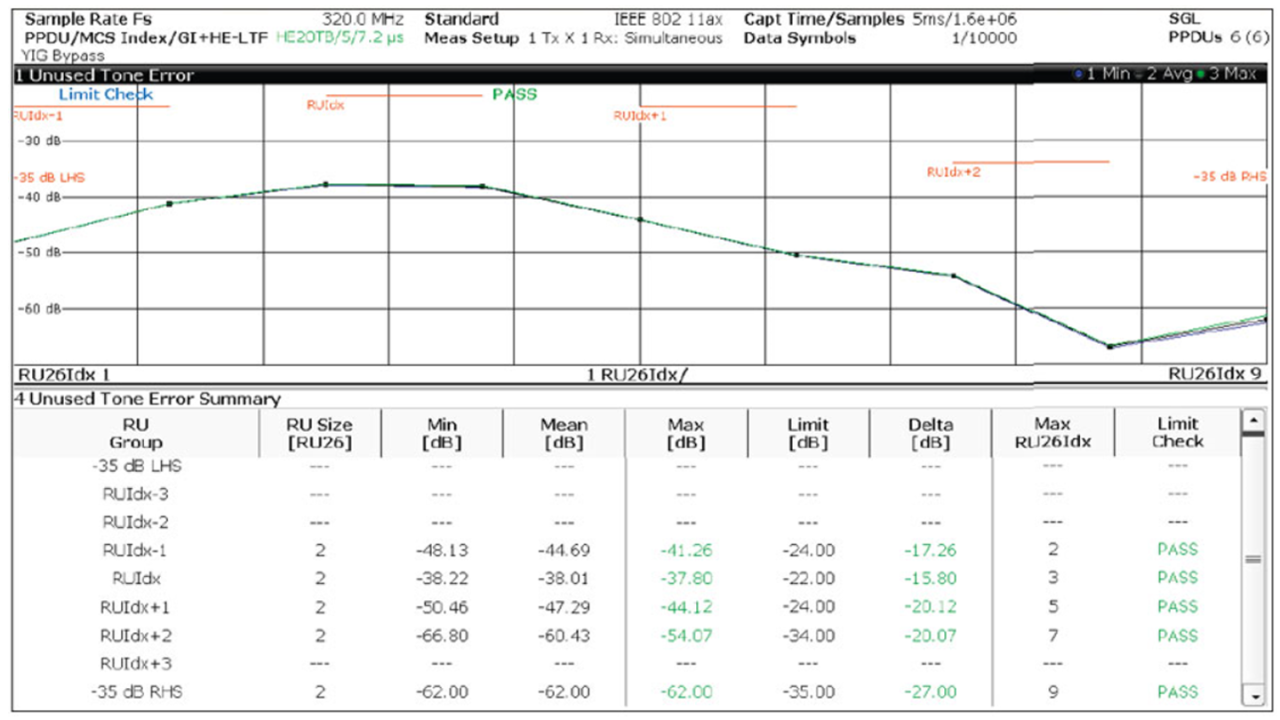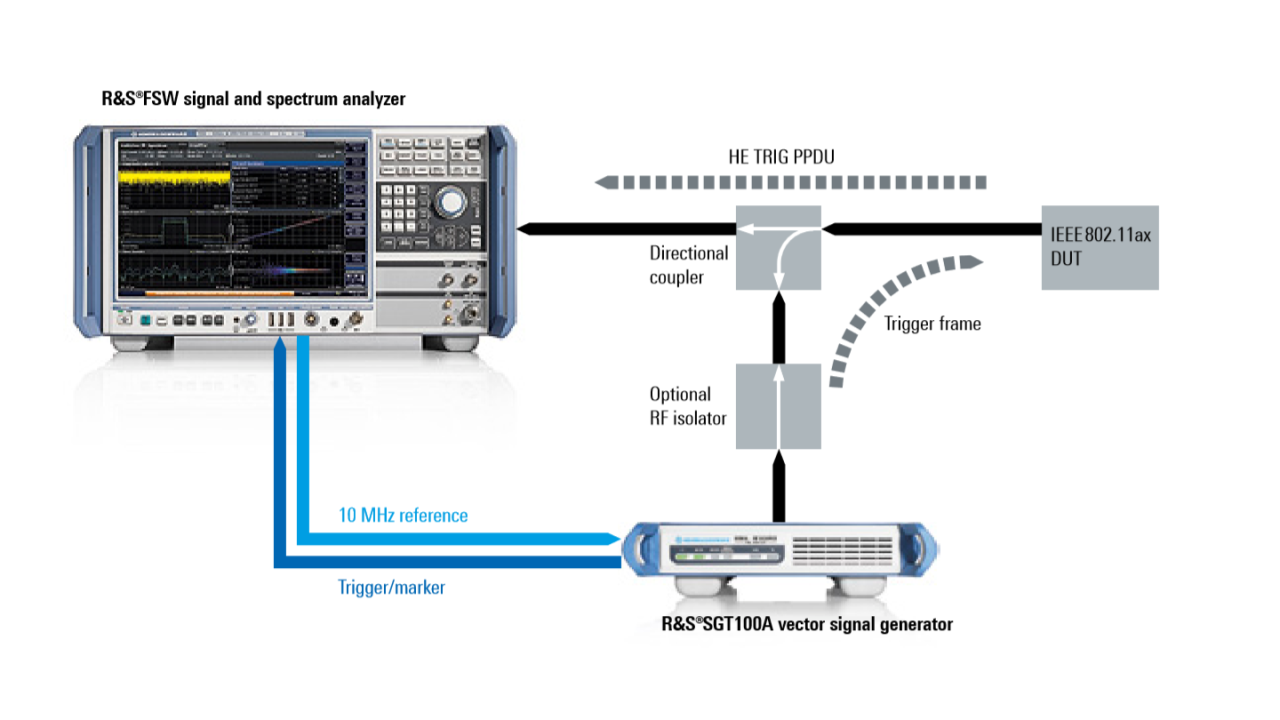Your task
Wireless connectivity, which has been successfully implemented all over the world, has gone through some tremendous evolutionary steps. Legacy WLANs have introduced physical layer functionality such as wider bandwidth, MIMO and higher-order modulation schemes, achieving higher throughput. To tackle the challenges of crowded networks, the upcoming new IEEE 802.11ax standard will now focus on increasing overall efficiency. The most important change is the introduction of OFDMA for uplink and downlink, which offers more flexibility but also increases complexity. To ensure the success of future WLAN IEEE 802.11ax devices and services, it is obvious that new tests must be conducted to verify interworking.
Especially for the OFDMA uplink, also called high-efficiency trigger-based (HE TB) PPDU, it is critical that all devices operate within the defined limits. Since multiple stations (STA) participate in the HE TB PPDU transmission, the participating STAs have to synchronize transmission time, frequency, sampling clock and power to mitigate interference issues.
HE TB PPDU transmission (in the uplink) is preceded by a trigger frame sent by the access point (AP) (in the downlink). This trigger frame is sent to all stations to coordinate the uplink transmission. The trigger frame includes information such as payload length, bandwidth, resource unit (RU) allocation and modulation scheme. Each STA needs to synchronize its LO frequency to the frequency of the trigger frame. Further, the transmission of the uplink signal must start after a specified short interframe space (SIFS) time interval after the end of the trigger frame.
Since an STA occupies only a small portion of the available bandwidth (OFDMA), it must ensure that unwanted emissions within the channel stay below certain limits in order not to interfere with other stations.








